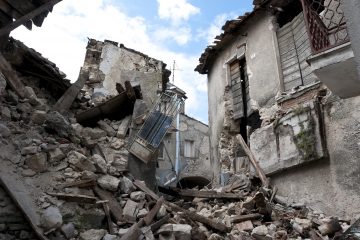A few months ago, as part of the student choice homework activity, one of my best AP students chose to label ten items in her house she didn’t know the word for and keep the labels up for one week. She probably is the student with the most chance of success on the exam. Her sister scored a 4 two years ago and she might just outdo her and score a 5 because she’s so good at multiple choice and source integration. You’ll never believe one of the words she’d labeled, a word she’d been struggling to remember all along: window.
Really? Window? She got all the way to AP Spanish, with vocabulary lists and stories and discussions, and hadn’t acquired the word window? She can give you words like environment and random and wake up very early but not window? You got it.
Last month my colleague and I took a group of students to tour and explore the avant garde Spanish immersion program at Georgetown College here in Kentucky. One of the activities was to make a maraca using two plastic spoons, a plastic Easter egg, a handful of corn kernels, and tape. The leader gave instructions in Spanish and the students completed the task. Guess what word my students couldn’t come up with? Not even my AP students. Not even my AP student who lived in Spain until he was 9. Spoon. You can imagine how I felt!
These two situations illustrate some very important principles about vocabulary:
- Give vocab lists and vocab quizzes all you want – you cannot control the vocabulary your students do and don’t acquire.
- Creating long-term memory is a lot more complicated a process than your textbook and your decontextualized crossword puzzles want you to believe.
- WordReference in their pocket does not make them proficient.
So, what can you do about it? If you can’t control what vocabulary they acquire, what are you there for? Of course, there are several important things you can do to encourage a rich, broad vocabulary in your students.
- Realize that your vocab lists are a starting point and nothing more. They are not a list of words your students will know at the end of the chapter.
- Let students add to their vocab lists or build them on their own based on what they need, because what they need is what their memory will hold on to.
- Provide opportunities to explore target-language content on a daily basis using authentic materials. Vocabulary in context builds long-term memory. Our favorite authentic materials are songs and novels.
- Capitalize on funny or emotional situations because these encode better memory connections.
- Use student assessments to give examples of shallow and deep vocabulary (one recent example for us was está en and está ubicado en).
Above all, don’t sweat it too much. We’ve been approaching vocabulary in our language teaching system completely wrong for a long, long time. If you approach teaching language as giving students tools and experiences for the language they want and need to use, the vocabulary will develop. If you drill and quiz too-long lists of generalized, decontextualized words, you’ll find that the only thing you controlled was when numbers went into your gradebook.
Foto credit: Leire Etxaniz Sanz
4 Comments
Comments are closed.





This post came along at the perfect time… ending our first year together as a TPRS department my colleagues and I are looking at each other trying to figure out how to keep all of the fun, spontaneous moments that were unique to each teacher, unique to each class, while also building a more thoughtful, spiraling curriculum plan for next year. I think the vocab lists are largely out the window and what will unite our sections are the novels that we read.
My reaction as I progressed through the post:
First–Window? OMG. Tell. Me. About it. These kids, am I right?
Then–Hey, yeah, my kids did some maraca things kinda like that! But spoon, yeah, I guess they wouldn’t know spoon…I may be a failure and maybe should have done the lame restaurant units the textbooks suggest.
And then–That is true. I cannot. I admit defeat.
And then–Preach! Boo to you, textbooks! (Please forgive the crosswords I assigned last week! I didn’t mean it!)
Follwed by–Seriously, I have to ban WordReference for the first 10-15 minutes of a writing assignment to get them to even consider using their brains.
And then–I…guess I wasn’t really there to control their vocabulary, now that I think about it…
Closely followed by–Yes. Need. I do that. Kind of.
On to–Authentic materials! Woohoo! I’m not hopeless!
Right before–Funny or emotional…I should probably sneak more of that in…
Then–OK, I totally don’t get the difference between shallow and deep vocabulary. Is deep vocabulary something I need to do in Spanish 1 at all?
And then–PHSHEW!!
And–Yes, yes we have.
And–Tools, yeah, that’s the ticket! That’s what I’m doing!
And finally…[slinks off to soak toes]
HA this comment was like soaking my feet for me. I nominate it for best comment ever. 🙂
About shallow vocabulary, I wouldn’t worry too much about deepening vocabulary with Spanish 1 students unless you have some that are super motivated and seem to have a high aptitude for vocabulary. Otherwise, I’d just take opportunities to encourage use of common idioms from phrases students like to use. My favorite ones are “no veo la hora de” and “tengo ganas de” because I get really tired of hearing “no puedo esperar para…”
So true! I used to make sure that they knew every single vocab on the list & then realized they would only learn what they felt was necessary to their learning journey. I’m trying to be a bit more accepting with what they learn and I do emphasize that certain themed vocab is necessary for the IB exam. Great post & a great reminder!